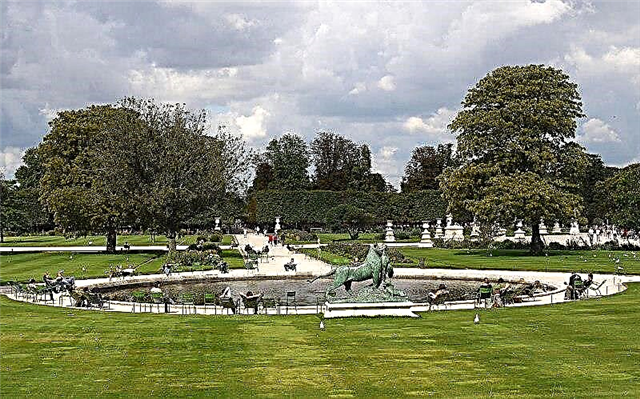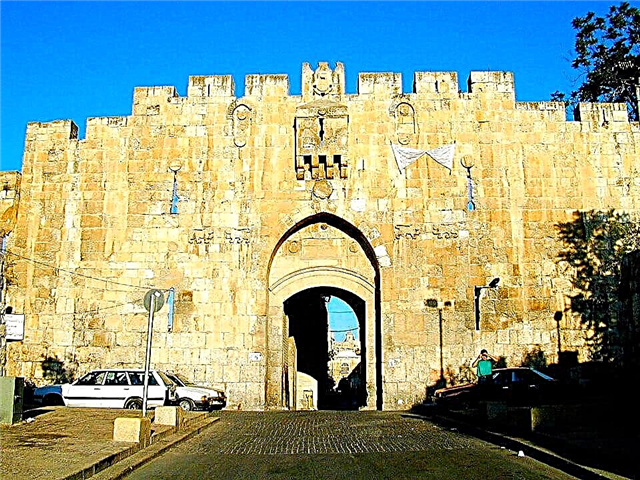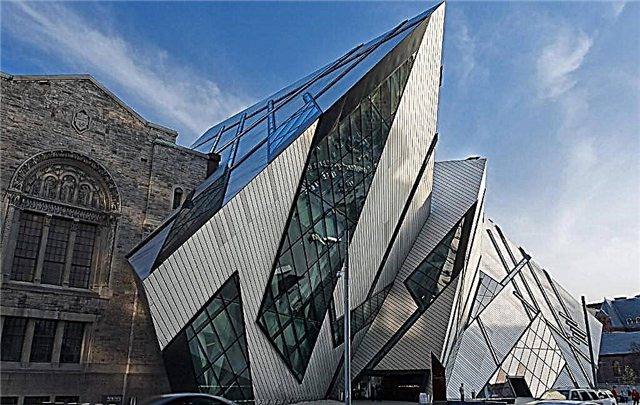Address: Moscow, st. Malaya Gruzinskaya, 15
Foundation date: 1922 year
Coordinates: 55 ° 45'51.8 "N 37 ° 34'16.9" E
Content:
One of the most famous museums in Moscow is located in the city center, in eclectic red brick buildings. It is dedicated to fauna and flora, the origin of people and the evolution of life on the planet. The biological museum contains over 90 thousand exhibits. Tourists do not leave the display cases with ancient fossils for a long time and look at stuffed rare animals with pleasure.

Museum buildings
The collections occupy three picturesque mansions built in the pseudo-Russian style in the 90s of the 19th century. The history of unusual buildings is interesting in itself. They appeared thanks to the famous Russian merchant and collector Pyotr Ivanovich Shchukin.
In 1891, when his father died, Shchukin decided to move into his own house. To house a large collection of rare items, he built original mansions. The new Museum of Antiquities has accommodated objects of art brought by a merchant from Japan, beautiful Persian carpets, old engravings and items of Russian antiquity. The Shchukin collection grew rapidly, so new buildings had to be erected. The large museum complex acquired its final form only in 1905.

Collection history
The popular museum has been around for almost a century. The exposition was founded in 1922, thanks to the efforts of Boris Mikhailovich Zavadovsky, an enthusiastic biologist and popularizer of science. In those years, he served as a professor at one of the universities in Moscow. Zavadovsky combined the anatomical and zoological preparations of the small Museum of Wildlife and placed them in two halls of the university building on Miusskaya Square.
At first, the new museum served only students, but its director decided that this was not enough. In the park near the building, open expositions were tripled. Green spaces, areas of medicinal and melliferous herbs, and training models of crop rotations appeared here. Visitors who came here were shown how to properly pollinate and graft agricultural plants.

In the mid-1930s, the museum was transferred to the Shchukin mansions, but the work in the open pavilions continued. From a small square in the city center, she moved to the Gorky and Sokolniki Park. The staff tried to keep the expositions not dry and boring, so a large aquarium with anemones and an open-air cage, where the Far Eastern flying squirrels were settled, appeared in the museum. It was so unusual and interesting that the biological museum immediately fell in love with Muscovites and guests of the capital.
Why do adults and children come to the museum
Guided tours of the museum halls open up the familiar but unknown world of biology. A journey into fascinating science allows you to understand how the biosphere works, what genetics does, and how animals and plants evolved on Earth.

Curious kids love the story of prehistoric dinosaurs that disappeared from our planet many thousands of years ago. Schoolchildren are happy to get acquainted with unusual insects, grasses and trees. Adult tourists try to comprehend and put together a colorful picture of the modern world from separate pieces of being.
What can be seen in the museum today
Today, the exhibits are located on an area of 900 sq. This is not enough, and there is not enough space for the largest biological collection in Russia. Visitors have access to only 7% of the total number of rarities stored in the museum. But there are also positive aspects - the expositions are constantly updated. Some items are hidden, while others are taken out of the storerooms, so the collections look unusual.

Up to fifty exhibitions are held in the museum annually. They tell about the nature of Moscow, animals - symbols of the year, rare birds, famous scientists - biologists and donors, thanks to whom new exhibits appear.
In the halls you can see stuffed animals, dummies of mushrooms, colorful natural dioramas, collections of rare shells and unique exhibits dedicated to various developmental anomalies. Animalistic paintings and drawings are hung on the walls and stands.
The original part of the museum is a live greenhouse. The green exposition contains more than 220 plant species. These are representatives of a vibrant tropical flora, endangered species and unusual predatory plants. In the warm season, tourists are allowed to visit a landscape exhibition in the open air, and anyone can admire the Red Book plants of Moscow and the Moscow region.

For more than 20 years, the museum has existed the "Room of Discovery". Coming here, visitors of all ages measure their own weight and height, examine small objects through microscopes and taste rare fruits. This is a place where you can touch the fossils, learn to smell oriental spices and understand what "optical illusion" is.
Educational programs
For more than 20 years, the museum has been playing the Family Maze. For a gambling quest, children receive passports with tasks and find answers to questions right in the halls of the museum. In order to win, you need to carefully examine the wings of insects under a microscope, touch a real mammoth tusk and tools used by cavemen.

For elementary school students, the museum offers lessons with experiences. They tell about the nature of light, sound and chemical processes that occur in nature. Many children enjoy the lessons and themed programs in the museum halls. High school students and students attend special classes in botany, zoology, ecology and human and animal physiology. Lovers of cacti and home flowers come to listen to popular science lectures by reputable florists.
There is a children's interactive laboratory at the museum. In it, young researchers get acquainted with a model of the human body, modern optical devices, listen to birdsong and study the habits of animals.

Lovers of ancient flora and fauna go to the paleontological circle. The training program is designed for two years and provides lectures and field trips to field practice in the Moscow region and other regions of our country.
Useful information for visitors
The doors of the museum are open on Thursdays from 12:00 to 21:00, on Sunday from 11:00 to 18:00, and on other days from 10:00 to 18:00. The day off is Monday. A full ticket costs 280 rubles, a discount ticket is twice as cheap (2018).
They travel through the halls on their own or accompanied by a guide. Tourists are offered sightseeing, thematic, field excursions and lessons with demonstration of experiences. Many people strive to get into the interactive "Microtheatre", in which actors play the roles of cells of the human body. For excursion services they pay 240 rubles (2018).

How to get there
The museum complex is located at 15 Malaya Gruzinskaya Street. It is easy to walk to it in 10 minutes from the metro stations "Ulitsa 1905 Goda", "Krasnopresnenskaya" and "Barrikadnaya".











